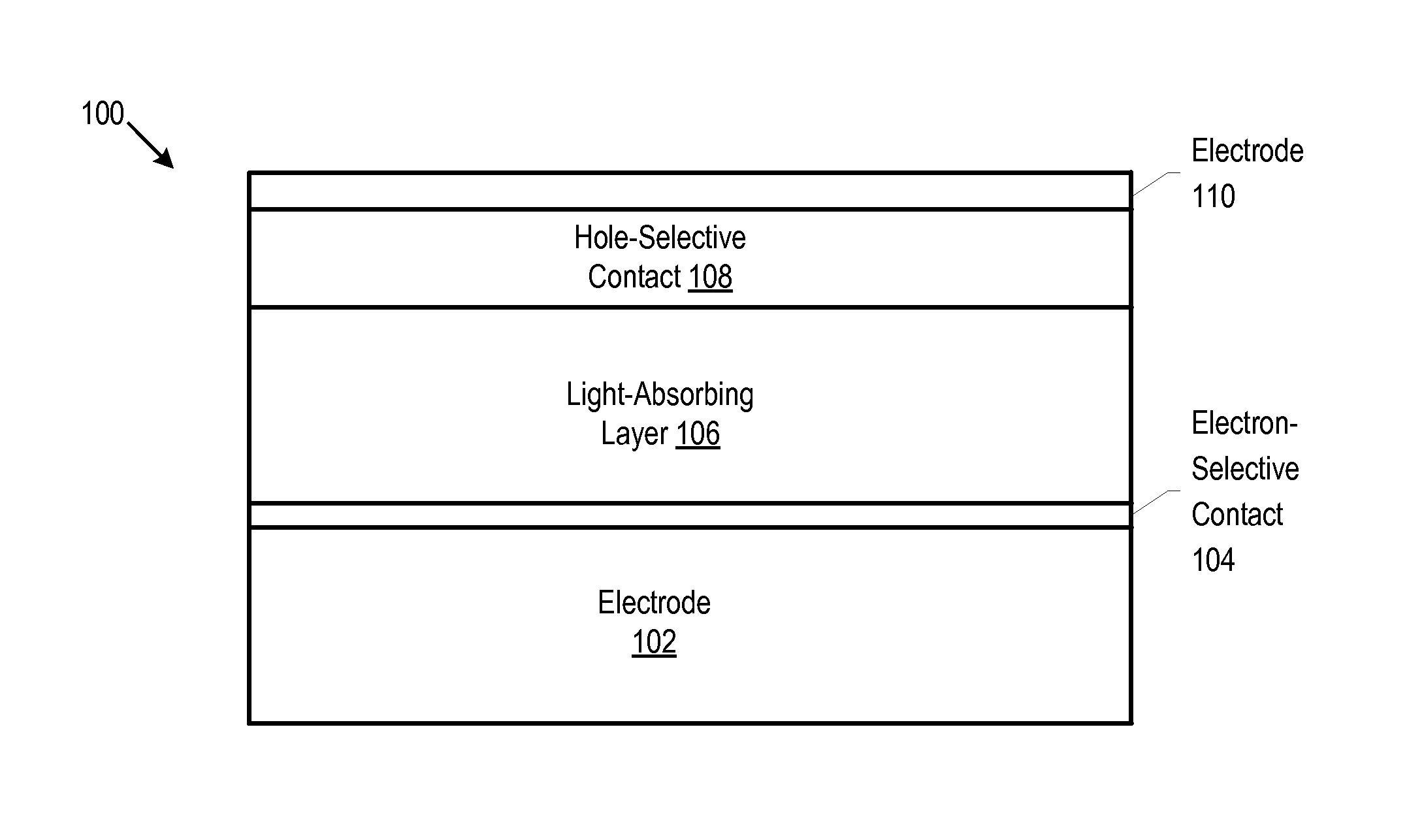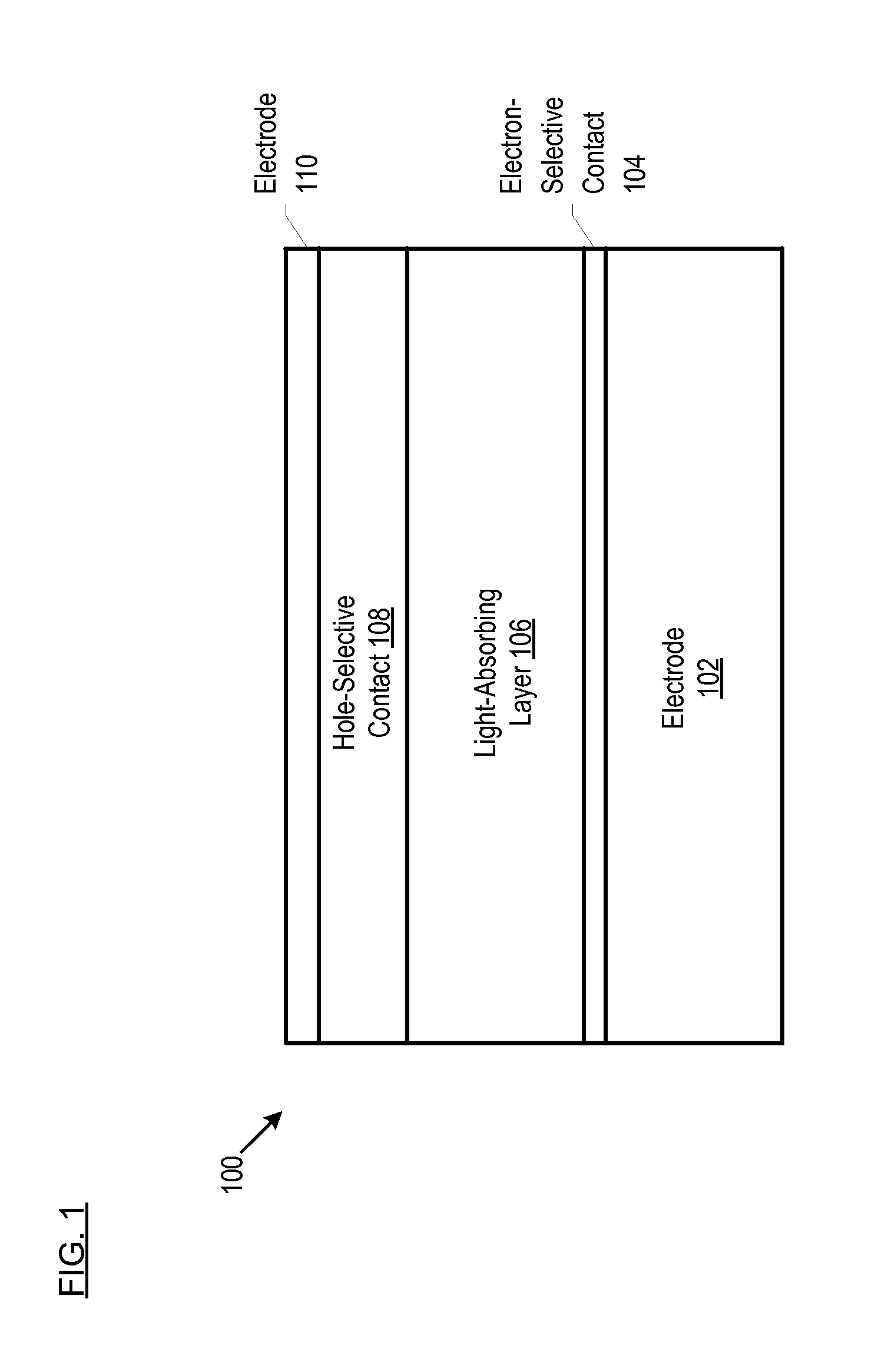Solar Cells Comprising 2d-Perovskites
a technology of solar cells and perovskites, applied in the field of solar cells, can solve the problems of low quality films, negatively affecting solar cell performance, and unstable 3d-perovskites
- Summary
- Abstract
- Description
- Claims
- Application Information
AI Technical Summary
Benefits of technology
Problems solved by technology
Method used
Image
Examples
example
Fabrication Solar Cell Fabrication
[0083]An FTO-coated glass slide (15 Ωsq−1) served as a substrate and transparent electrode (FIG. 1: electrode 102). FTO was removed from one edge of the glass slide by appropriately masking the slide and etching with Zn powder and 2 M HCL. (This was to avoid a shunt pathway upon contacting the finished device with the anode.) The etched substrate was cleaned, sequentially, with Extran® brand detergent (commercially available from EMD Millipore, a division of Merck KGaA, headquartered in Billerica, Mass.), acetone, isopropanol, and oxygen plasma.
[0084]A layer of TiO2 (serving as electron-selective contact 104) was deposited by spray pyrolysis. Titanium diisopropoxide bis(actylacetonate) (3.0 mL, 6.2 mmol) was diluted in ethanol (27 mL) and sprayed onto the FTO-coated glass, which was maintained at 500° C. The nascent device was then cooled to room temperature, heated at 70° C. for 0.5 hours in a 0.04 M aqueous solution of TiCl4, and then washed in de...
PUM
| Property | Measurement | Unit |
|---|---|---|
| transparent | aaaaa | aaaaa |
| band gap | aaaaa | aaaaa |
Abstract
Description
Claims
Application Information
 Login to View More
Login to View More - R&D
- Intellectual Property
- Life Sciences
- Materials
- Tech Scout
- Unparalleled Data Quality
- Higher Quality Content
- 60% Fewer Hallucinations
Browse by: Latest US Patents, China's latest patents, Technical Efficacy Thesaurus, Application Domain, Technology Topic, Popular Technical Reports.
© 2025 PatSnap. All rights reserved.Legal|Privacy policy|Modern Slavery Act Transparency Statement|Sitemap|About US| Contact US: help@patsnap.com



